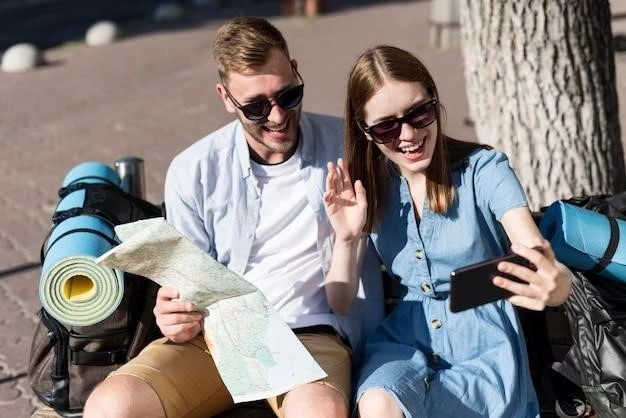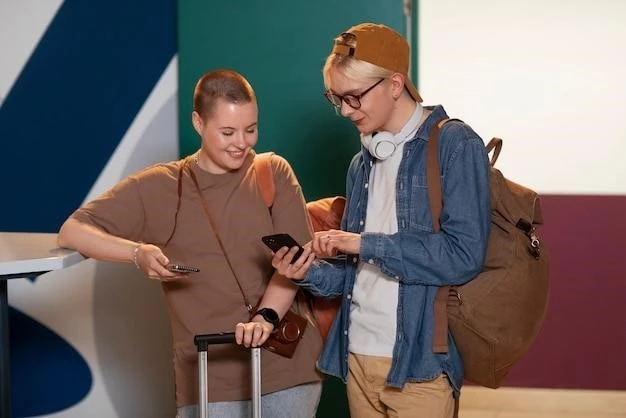Emerging Trends in Accessible Tourism
The landscape of travel is changing, and accessible tourism is at the forefront of this transformation. More than ever, travelers with disabilities are seeking enriching experiences, and the industry is responding with innovative solutions and a growing commitment to inclusivity. Several key trends are shaping the future of accessible travel in 2024 and beyond:

Top Accessible Destinations for 2024
As accessible travel gains momentum, a growing number of destinations are embracing inclusivity and offering unforgettable experiences for everyone. Here are some of the top accessible destinations for 2024, recognized for their commitment to accessibility and diverse range of attractions:
Barcelona, Spain
Barcelona consistently ranks high on lists of accessible cities, and for good reason. With its commitment to universal design, Barcelona boasts accessible beaches, public transportation, and numerous attractions, including the Sagrada Familia and Park Güell.
Sydney, Australia
Sydney is renowned for its stunning harbor and iconic landmarks, many of which are accessible to travelers with disabilities. From the Sydney Opera House to the Taronga Zoo, the city offers a wealth of accessible experiences.
San Francisco, USA
Known for its progressive values, San Francisco has long been a leader in accessible tourism. The city’s iconic cable cars are wheelchair accessible, and many museums and attractions offer accommodations for visitors with disabilities.
Singapore
Singapore is celebrated for its efficient and accessible public transportation system, making it easy for travelers with disabilities to navigate the city. Gardens by the Bay, a futuristic botanical garden, is just one example of Singapore’s commitment to accessible design.
Ljubljana, Slovenia
Ljubljana, the charming capital of Slovenia, is emerging as a leader in sustainable and accessible tourism. The city center is largely pedestrianized, and many attractions, including Ljubljana Castle, are accessible by funicular or lift.
This is just a starting point, as the world of accessible travel continues to expand. When researching destinations, look for detailed accessibility information, user reviews, and consider working with specialized travel agents who cater to travelers with disabilities.
Planning Your Accessible Trip
Planning a trip when you have accessibility needs requires meticulous research and preparation. However, the rewards of a well-planned accessible vacation are immeasurable. Here are key steps to ensure a smooth and enjoyable travel experience:
Conduct Thorough Research:
Start by identifying your specific accessibility requirements. This might include wheelchair accessibility, accessible restrooms, sign language interpretation, or accommodations for dietary restrictions. Once you have a clear understanding of your needs, research potential destinations, accommodations, transportation options, and attractions that cater to those needs.
Leverage Accessible Travel Resources:
Utilize online resources specializing in accessible travel. Websites and apps provide reviews and ratings of hotels, restaurants, and attractions based on their accessibility features. Consult travel blogs and forums for firsthand accounts from travelers with disabilities. Consider working with a travel agent specializing in accessible travel; they can provide invaluable assistance with booking and logistics.
Contact Businesses Directly:
While online resources offer a starting point, it’s essential to contact hotels, airlines, and tour operators directly to confirm accessibility details. Don’t hesitate to inquire about specific features, such as doorway widths, elevator availability, or the availability of visual alarms. Clear communication is key to ensuring your needs are met.
Book in Advance:
Booking flights, accommodations, and tours well in advance is crucial, especially if you require specific accessibility features. Airlines often have limited spaces for wheelchair users, and accessible hotel rooms tend to book quickly. Advance planning allows you to secure the necessary arrangements and avoid last-minute disappointments.
Prepare for the Unexpected:
Even with meticulous planning, unforeseen circumstances can arise. Pack essential medications and medical supplies in your carry-on luggage. Carry copies of important documents, such as your passport, travel insurance, and medical prescriptions. Maintain a positive attitude and be prepared to adapt your itinerary as needed.

Transportation and Accommodation
Accessible transportation and accommodation options are essential for travelers with disabilities to enjoy seamless and comfortable journeys. Fortunately, the travel industry is making strides in providing inclusive options, ensuring everyone can explore the world with ease.
Accessible Transportation:
Air Travel:
Most airlines offer assistance for passengers with disabilities, including wheelchair assistance, boarding assistance, and accessible restrooms on board. Inform the airline about your needs during booking and confirm arrangements at least 48 hours before departure. Consider bringing a copy of your wheelchair’s specifications to ensure it can be accommodated properly.
Rail Travel:
Train travel can be a comfortable option for those with mobility impairments. Many train stations offer level boarding, accessible restrooms, and designated seating areas. Book tickets in advance to secure accessible accommodations and confirm details with the rail operator.
Accessible Ground Transportation:
Look for transportation providers that offer accessible vehicles, such as vans with ramps or lifts. Ride-sharing services are increasingly offering accessible options, but it’s crucial to book these services in advance to ensure availability.
Accessible Accommodation:
Hotels:
When booking a hotel, look for properties that explicitly state their accessibility features. This includes roll-in showers, grab bars in bathrooms, visual alarms, and accessible pathways throughout the property. Contact the hotel directly to confirm details and request specific room features.
Vacation Rentals:
Online platforms for vacation rentals often have filters to search for properties with accessibility features. However, it’s important to verify details and ask for photos to confirm the accuracy of the listings. Direct communication with the property owner is crucial.
By carefully considering your transportation and accommodation needs and utilizing available resources, travelers with disabilities can create memorable and enjoyable travel experiences in 2024 and beyond.
Activities and Experiences
Accessible travel is about more than just reaching a destination; it’s about fully experiencing the unique activities and cultural immersion that travel has to offer. Fortunately, the range of accessible activities and experiences is expanding rapidly, catering to a diverse range of interests and abilities.
Accessible Tours and Excursions:
Many tour operators now offer specialized accessible tours designed to accommodate various needs. These tours may include adapted vehicles, knowledgeable guides trained in assisting travelers with disabilities, and itineraries that prioritize accessibility without compromising on the overall experience.
Museums and Cultural Attractions:
Museums and cultural institutions are increasingly adopting inclusive practices, providing ramps, elevators, audio guides, tactile exhibits, and sign language interpretation. Research attractions in advance to check for accessibility features and any special programs or tours tailored to visitors with disabilities.
Outdoor Recreation:
Enjoying the great outdoors is possible for everyone. National parks and recreational areas often have accessible trails, campsites, and picnic areas. Some destinations offer adaptive sports equipment rentals, such as handcycles or beach wheelchairs, allowing individuals with mobility impairments to participate in activities like cycling or swimming.
Dining and Entertainment:
Many restaurants and entertainment venues are becoming more accessible, providing ramps, accessible restrooms, and menus in Braille or large print. Contact venues in advance to inquire about accessibility features and make reservations if needed.
By embracing the growing range of accessible activities and experiences, travelers with disabilities can create truly unforgettable travel memories in 2024. Don’t hesitate to communicate your needs and preferences to ensure a rewarding and enriching journey.

Technology and Accessibility
Technology is playing a transformative role in enhancing travel accessibility, empowering individuals with disabilities to navigate the world with greater independence and confidence. From planning tools to assistive devices, technological advancements are breaking down barriers and fostering a more inclusive travel landscape.
Accessible Travel Planning Apps:
Numerous mobile applications are specifically designed to assist travelers with disabilities in planning and navigating their trips. These apps provide comprehensive information on accessible transportation, accommodations, attractions, and restaurants. Features may include user-generated reviews, accessibility ratings, and real-time updates on accessible routes and services.
Assistive Technologies:
A wide array of assistive technologies is available to enhance travel experiences for individuals with disabilities. Portable ramps, stair climbers, and mobility scooters provide increased mobility. Hearing aids with Bluetooth connectivity and captioning devices enhance accessibility for those with hearing impairments.
Smart Destination Initiatives:
Forward-thinking destinations are implementing smart city technologies to improve accessibility for all. This includes accessible public transportation systems with real-time information displays, tactile paving for the visually impaired, and sensory gardens designed to engage individuals with a range of sensory needs.
Virtual and Augmented Reality:
Virtual reality (VR) and augmented reality (AR) technologies are creating immersive travel experiences that are accessible to individuals with disabilities. VR tours allow users to explore destinations and attractions virtually, while AR applications can overlay accessibility information, such as the location of ramps or accessible restrooms, onto real-world environments.
As technology continues to advance, we can anticipate even more innovative solutions that will further enhance accessibility in the travel industry. These advancements will empower individuals with disabilities to explore the world with greater freedom, independence, and enjoyment.

Sustainable and Accessible Travel
Sustainable and accessible travel are inherently interconnected, promoting a more inclusive and responsible approach to exploring the world. As travelers increasingly seek authentic and meaningful experiences, there is growing recognition that sustainability and accessibility must go hand in hand.
Eco-Friendly Accessible Accommodations:
A growing number of hotels and accommodations are embracing both sustainability and accessibility. Look for properties that prioritize energy efficiency, water conservation, waste reduction, and the use of eco-friendly materials. These accommodations often incorporate accessible design features, making them ideal for environmentally conscious travelers with disabilities.
Accessible Transportation Options:
Choosing accessible transportation options with a lower environmental impact is essential for sustainable travel. Opt for public transportation, such as trains or buses, whenever possible. Some destinations offer accessible bike rentals or electric vehicle charging stations, providing eco-friendly alternatives for getting around.
Supporting Inclusive Local Communities:
Sustainable and accessible travel involves supporting local communities and businesses that prioritize inclusivity. Seek out tour operators and restaurants that employ people with disabilities and promote accessible tourism. By supporting these businesses, travelers contribute to a more equitable and inclusive tourism industry.
Responsible Wildlife Tourism:
Wildlife tourism can be made accessible and sustainable by choosing operators committed to ethical practices. Look for tours that prioritize animal welfare, minimize environmental impact, and provide accessible viewing platforms or adapted vehicles.
By making conscious choices and supporting businesses that align with these values, travelers can contribute to a more sustainable and accessible future for the tourism industry and the planet.

Tips for Travelers with Disabilities
Traveling with disabilities presents unique considerations, but with careful planning and these helpful tips, you can navigate the world with confidence and create unforgettable travel memories.
Plan Ahead and Book Early:
Early planning is crucial for accessible travel. Book flights, accommodations, and tours well in advance to secure the necessary arrangements and ensure availability. Contact airlines, hotels, and tour operators directly to confirm accessibility details and request specific accommodations.
Communicate Your Needs Clearly:
Don’t hesitate to communicate your specific needs and requirements to travel providers. Be upfront about your disability and any assistance you may need. Clear communication helps ensure your comfort and safety throughout your journey.
Pack Essential Medications and Supplies:
Carry all essential medications, medical supplies, and equipment in your carry-on luggage. Keep copies of prescriptions and medical documentation readily available. It’s also wise to pack extra supplies in case of unexpected delays or lost luggage.
Research Accessibility Features in Advance:
Utilize online resources and contact attractions, restaurants, and transportation providers to inquire about accessibility features. Confirm the availability of ramps, elevators, accessible restrooms, and any other accommodations you may require.
Allow Extra Time:
Navigating airports, train stations, and unfamiliar environments can take longer when you have accessibility needs. Allow ample time for check-in, security, and transfers to avoid unnecessary stress and ensure a smoother journey.
Remember, accessible travel is an ongoing process, and every journey offers opportunities for learning and growth. By planning ahead, communicating effectively, and maintaining a positive attitude, you can overcome challenges and enjoy rewarding and unforgettable travel experiences.
Resources for Accessible Travel Planning
Planning an accessible trip can feel daunting, but a wealth of online resources and organizations are dedicated to making travel easier and more enjoyable for people with disabilities. These resources provide valuable information, support, and inspiration to empower travelers of all abilities.
General Accessible Travel Websites and Apps:
- AccessibleGO: A comprehensive website and app featuring reviews and ratings of hotels, restaurants, and attractions based on their accessibility features.
- Wheelmap: A global community-based map that allows users to rate the accessibility of locations worldwide, including restaurants, shops, and public restrooms.
- TripAdvisor: While not exclusively focused on accessible travel, TripAdvisor allows users to filter reviews and search for accommodations and attractions with specific accessibility features.
Specialized Organizations and Travel Agencies:
- Society for Accessible Travel & Hospitality (SATH): A non-profit organization that promotes accessibility in the travel and hospitality industries, providing resources and information for travelers with disabilities.
- Flying Wheels Travel: A travel agency specializing in accessible travel arrangements for individuals and groups with disabilities.
- Mobility International USA (MIUSA): An organization that promotes the inclusion of people with disabilities in international exchange programs and provides resources on accessible travel.
Government and Transportation Resources:
- U.S. Department of Transportation: Provides information on traveler rights, accessibility regulations, and resources for passengers with disabilities.
- Transportation Security Administration (TSA): Offers guidance on airport security procedures for travelers with disabilities and medical conditions.
These resources are just a starting point. Explore the websites and services offered by these organizations and tailor your research to your specific needs and destination. Remember, with thorough planning and the right resources, accessible travel is within reach for everyone.
The Future of Accessible Tourism
The future of accessible tourism is bright, driven by a growing awareness of the needs and rights of travelers with disabilities, advancements in technology, and a global shift towards more inclusive travel experiences.
Universal Design as the Standard:
The concept of Universal Design, where environments and products are inherently accessible to people of all abilities, will become increasingly prevalent in the travel industry. Hotels, transportation systems, and attractions will prioritize design features that benefit everyone, such as step-free entrances, clear signage, and adjustable furniture.
Technology Empowering Travelers:
Emerging technologies will continue to revolutionize accessible travel. Artificial intelligence (AI)-powered apps will provide personalized accessibility information and real-time assistance. Wearable technology will offer navigation support and sensory augmentation for travelers with visual or hearing impairments.
Increased Demand and Economic Impact:
As the number of travelers with disabilities continues to grow, so too will the demand for accessible travel options. The economic impact of this growing market segment will encourage businesses to prioritize accessibility and tap into this underserved customer base.
Shifting Attitudes and Social Inclusion:
Accessible tourism is not just about infrastructure and logistics; it’s about fostering a culture of inclusivity and respect. As awareness grows, travelers will increasingly seek out destinations and businesses that prioritize accessibility, leading to a more welcoming and inclusive travel experience for everyone.
The future of accessible tourism holds immense potential. By embracing innovation, promoting inclusivity, and recognizing the economic and social value of accessible travel, we can create a world where everyone can explore the globe with freedom and dignity.
Case Studies: Accessible Travel Success Stories
Highlighting real-world examples of destinations and organizations excelling in accessible tourism can inspire further progress and demonstrate the transformative power of inclusivity. Here are a few case studies showcasing success stories in the field:
Visit Flanders, Belgium:
Visit Flanders has implemented a comprehensive accessibility strategy, making the region a leader in accessible tourism. Their website provides detailed accessibility information for attractions, accommodations, and transportation. They also offer a certification program for businesses that meet specific accessibility standards.
National Parks Service (USA):
The National Parks Service (NPS) in the United States has made significant strides in improving accessibility to its parks. Many parks offer accessible trails, visitor centers, campsites, and ranger-led programs. The NPS website provides detailed accessibility information for each park, allowing visitors to plan their trips accordingly.
Lonely Planet Accessible Travel Guides:
Lonely Planet, a leading travel guide publisher, has released a series of accessible travel guides covering destinations worldwide. These guides provide practical information on accessibility features, transportation options, and recommendations for accessible activities and experiences.
The Open Doors Organization:
The Open Doors Organization is a non-profit organization that partners with businesses to improve accessibility and create inclusive travel experiences. They offer training programs, consulting services, and resources to promote accessible tourism globally.
These case studies demonstrate the positive impact of prioritizing accessibility in the travel industry. By showcasing best practices and celebrating success stories, we can inspire other destinations and businesses to embrace inclusivity and make travel accessible for everyone.










